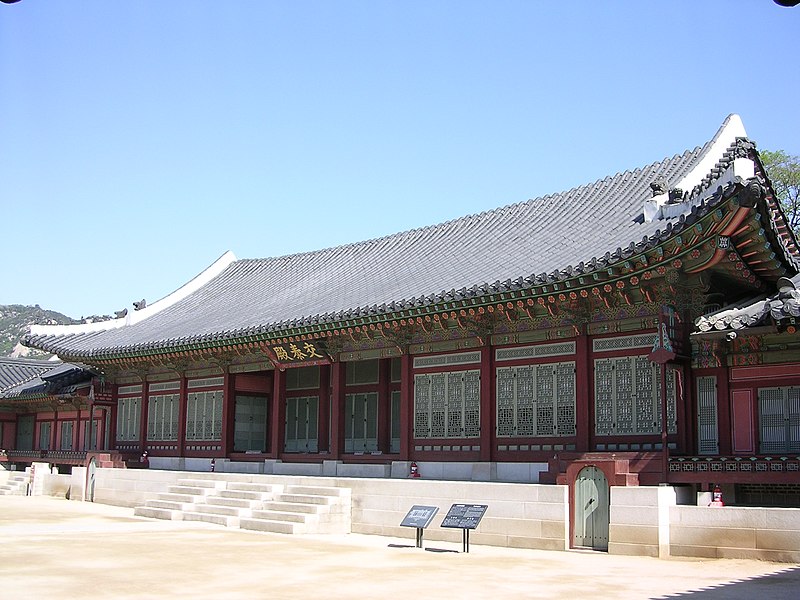
I see that UNESCO has added forty royal tombs of Korea's Joseon Dynasty to the World Heritage List. The Joseon Dynasty ruled Korea from 1392 to 1910.
[Image - The tomb of King Sejong the Great exemplifies the general style of Joseon Dynasty royal tombs. Photo by Kai Hendry, courtesy of Wikipedia]
It's founder, Yi Seong-gye,was a powerful general who seized power and had the Goryeo King U and his 8-year-old son, King Chang, executed then declared himself king, taking the name King Taejo.
King Taejo founded the city of Hanseong which became the modern city of Seoul. In it, he constructed Gyeongbuk Palace, completed in 1395, and the Changdeok Palace in 1405. Surprisingly, I noticed that although the Changdeok Palace was added to the World Heritage List in 1997, the Gyeongbuk Palace does not appear to be on the list. Upon further research I see that the original Gyeongbuk Palace was destroyed during the Japanese invasions of 1592. It was rebuilt in 1867 but again burned in 1876. King GoJong restored it in 1888 but it was dismantled by the Japanese in 1920 to restore the Huijeongdang of Changdeokgung Palace that had been destroyed by fire in 1917. Fortunately for all of us,
 Gyeongbuk Palace was reconstructed in 1994, meticulously replicated using the original specifications and design.
Gyeongbuk Palace was reconstructed in 1994, meticulously replicated using the original specifications and design.Joseon architects were truly masterful. Looking at pictures of the palace complex in Wikipedia, I find the Queen's Quarters especially beautiful.
[Image: KyoTaeJeon in Gyeongbokgung (Queen's Quarters), Seoul, Korea. Photo by Joon-Young, Kim. Courtesy of Wikipedia]
I was also touched when I read that King Sejong, Taejo's great-grandson, had the structure built to provide privacy to his Queen because Sejong suffered from frail health and often had to conduct business within the walls of his official residence in Gangnyeongjeon Hall. Behind the Queen's Quarters this sensitive ruler built a beautiful garden named Amisan. It's four hexagonal chimneys, constructed around 1869 in orange brick and decorative roof tiles, are renowned for their artistry
 that obscures their utilitarian function.
that obscures their utilitarian function.Sejong's reign was considered the pinnacle of the Joseon Dynasty. This interesting leader invented the Korean script, hanguel, "which is considered much easier to learn than Chinese characters. He also revolutionized agriculture and sponsored the invention of the rain gauge and sundial. Sejong was so wise, even as a young man, that his two older brothers stepped aside so he could be king." - More: About.com
[Image: Sejong The Great. Courtesy of The Korea Herald]

The Joseon Dynasty also fostered an acclaimed admiral, Yi Sun-sin, who, through the use of "turtle ships", the world's first ironclads, defeated the fearsome Japanese warlord Toyotomi Hideyoshi at the battle of Battle of Hansan-do in 1592.
[Image right - The Statue of Yi Sunsin, Sejongro, Jongrogu, Seoul, S.Korea. Courtesy of Wikipedia]
"When Emperor Gojong sent an emissary to The Hauge in June 1907 to protest Japan's aggressive posture, the Japanese Resident-General in Korea forced the monarch to abdicate his throne.Japan installed its own officials in the executive and judicial branches of the Korean Imperial government, disbanded the Korean military, and gained control of the police and prisons. Soon, Korea would become Japanese in name as well as in fact.
In 1910, the Joseon Dynasty fell, and Japan formally occupied the Korean Peninsula." - More: About.com
Learn more about it:

No comments:
Post a Comment